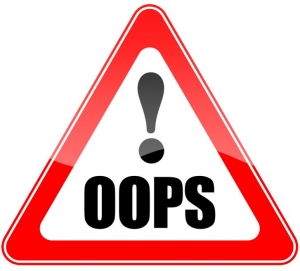Join our online community and be inspired to achieve your goals!
VIEW OUR FACEBOOK PAGE13 things you’re doing wrong on LinkedIn

Here are the most common mistakes we see and how you can avoid them.
Mistake 1 – No profile picture: LinkedIn says that profiles with a photo are 14 times more likely to be viewed than those without one. And a professional-looking photo makes a big difference. For tips on how to get a great-quality photo without paying a pro photographer, read our previous article on getting a professional headshot. Just remember: no dogs, babies, partners or party shots!
Mistake 2 – Not customising your headline: LinkedIn automatically populates your headline with your current or most recent position, but you can, and should, customise it. We recommend using all 120 characters available to create an informative and impactful snapshot of yourself. This is an important part of building your personal brand.
Mistake 3 – Skipping the summary: This is one of the most common areas we see clients overlook, but this is a wasted opportunity. Use it to provide an overview of who you are, who you help, what you specialise in and what you’ve achieved, using short, sharp wording broken up with subheadings and bullet points. Optimise your summary using keywords related to the roles you’re seeking.
Mistake 4 – Not making it consistent with your resume: LinkedIn should not be a cut-and-paste of your resume, but the two should align. While LinkedIn is more personal, less formal and may contain additional information, make sure your roles, dates and qualifications match up.
Mistake 5 – Forgetting to customise your LinkedIn URL: When you set up your profile, you’re automatically assigned a long combination of random letters and numbers as a unique URL. Take advantage of the ‘vanity URL’ option and customise your URL to reflect your first and last names or your business name (if you’re a business owner).
Mistake 6 – Not having recommendations: Recommendations are the easiest way to show credibility. They’re the modern-day version of a written reference, so spend some time requesting them. Approach appropriate 1st level contacts and ask them if they’ll write you a recommendation, specifying what you’re after or what you’d like highlighted. Be specific and most people will oblige. If you’re finding it hard to ask for a recommendation, offer to write one for somebody you’ve worked with and ask them to return the favour.
Mistake 7 – Sending random or non-personalised connection requests: While it’s not essential to restrict your networking to people you know well, you should always provide context when sending a connection request. For example, if you know the person, ask them about their business or personal life; if you’ve met the person briefly, remind them how you met; and if you’ve never met, do some research and tailor your request to explain why you’d like to connect.
Mistake 8 – Not building connections: Many employers place high value on a candidate’s connections. In many roles, you might be hired because you know certain people in your industry. You might be amazed at just how many people you know on LinkedIn. Seek them out and connect with them. You should be constantly building your network, adding contacts and accepting connection requests.
Mistake 9 – Not using web-friendly content: To improve readability and highlight important points, use bullet points and subheadings in relevant sections, including your summary and experience. Consider adjusting the order of your experience, skills, education etc. to suit your target role or industry. Be sure to use keywords and phrases specific to the position(s) you’re seeking throughout your profile.
Mistake 10 – Having an incomplete profile: Completing your profile not only helps more recruiters find you, it also sends a great message about your professionalism to people viewing your profile. In addition, it provides more networking opportunities. Complete as many sections as possible to achieve an ‘All-Star’ level.
Mistake 11 – Not including supporting information: LinkedIn lets you link to blogs, websites, presentations, projects etc. where people can learn more about you and your professional achievements. Including this supporting information will help strengthen your profile.
Mistake 12 – Not making it easy for people to contact you: LinkedIn is all about engaging with people. Invite people to connect or to contact you for advice if relevant. Including some personal information like volunteer work can also encourage like-minded people to connect with you. Take some time to learn about privacy settings to ensure you’re happy with how others see your profile, activities, and network information. Set preferences regarding job seeking, including letting recruiters know you’re open to opportunities.
Mistake 13 – Not responding professionally: Not responding to emails and connection requests in a timely manner looks unprofessional. Likewise, making judgements about people’s motives could be a mistake. Try to treat any enquiries or connection requests in the same way you would treat a business or sales enquiry. You don’t want to waste time obviously, but try not to ignore people you initially perceive as not able to add value.
LinkedIn is a fantastic professional networking tool with many features and benefits that you may not be taking advantage of. Optimise your profile using our tips above and you may be surprised by the results.
Do you need a stronger LinkedIn profile to help you connect with like-minded industry experts or boost your job search? We can help you develop a professional, keyword-optimised profile that sets you apart from your competitors. Learn more about our LinkedIn Profile Writing Service.

